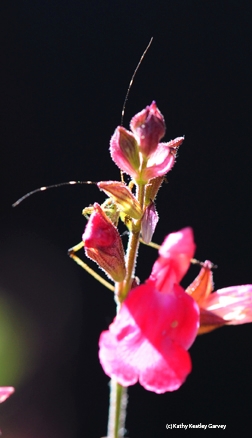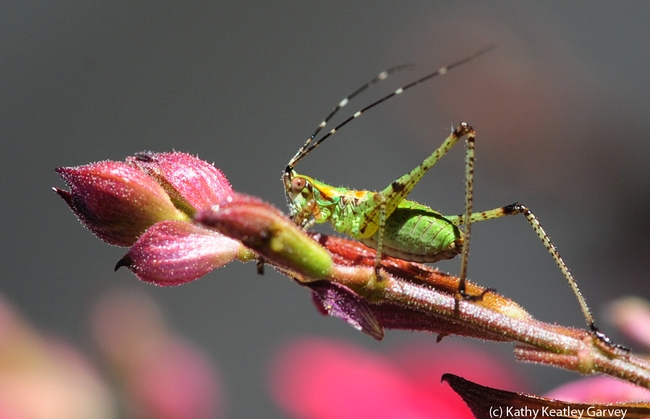
Decades after he passed, a cousin gave me a set of his books from his childhood home. One was "The Early Poems of Oliver Wendell Holmes," published in 1899 by T. Y. Crowell and Company.
In it is a poem, "To an Insect," and it's about katydids.
"I love to hear thine earnest voice,
Wherever thou art hid
Thou testy little dogmatist
Thou pretty Katydid!
Thou mindest me of gentlefolks,
Old gentle folks are they,
Thon say'st an undisputed thing
In such a solemn way."
Holmes (1809-1894), a physician, poet and professor, goes on to describe the sounds of a katydid as "thy piercing notes, so petulant and shrill" and asks "Oh, tell me where did Katy live and what did Katy do?"
Katydids, like grasshoppers and crickets, belong to the order Orthoptera. The katydid family, Teggigonildae, includes more than 6400 species. They're found throughout the world, with the greatest diversity in the tropics. They live where their host plants are.
Last weekend we saw long filamentous antennae poking from behind the red salvia in our yard. Upon closer inspection, it belong to a...drum roll...katydid.
The katydid is no friend of the farmer; it can wreak havoc in agricultural crops. Still, there's something about a katydid that makes you stop and ask "Katydid or Katy didn't?"
Or as Oliver Wendell Holmes pondered "What did Katy do?"
Attached Images:
